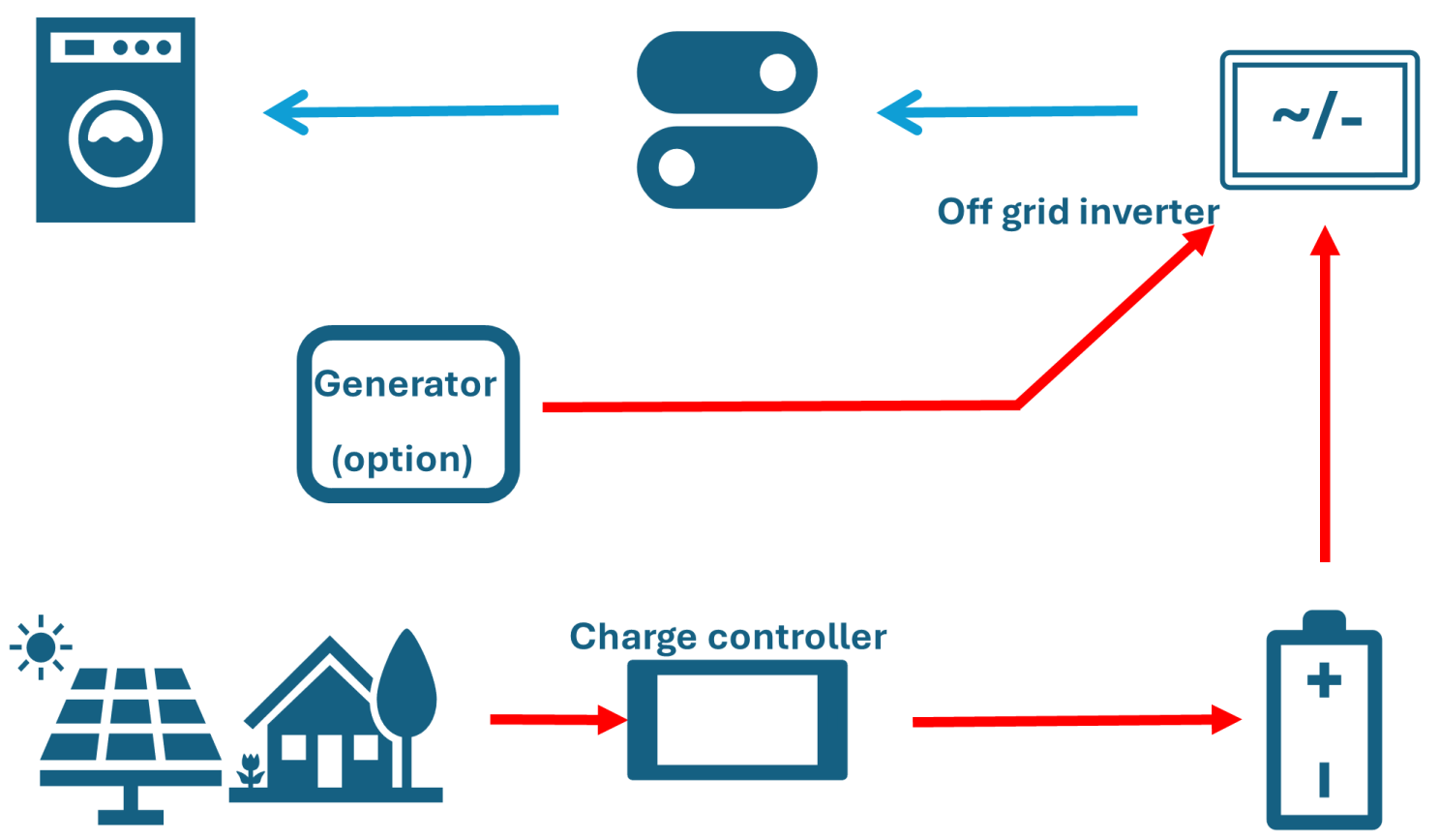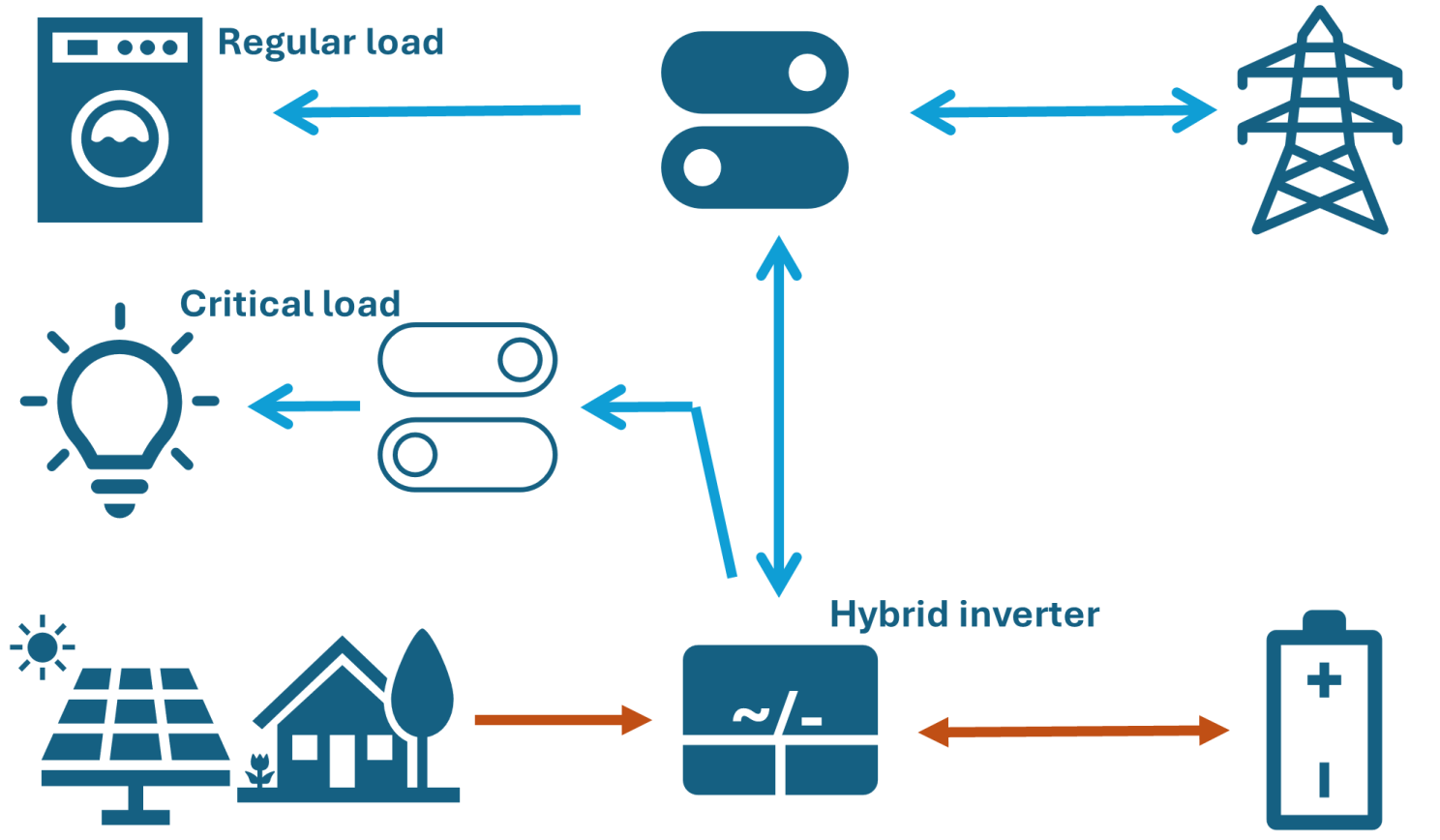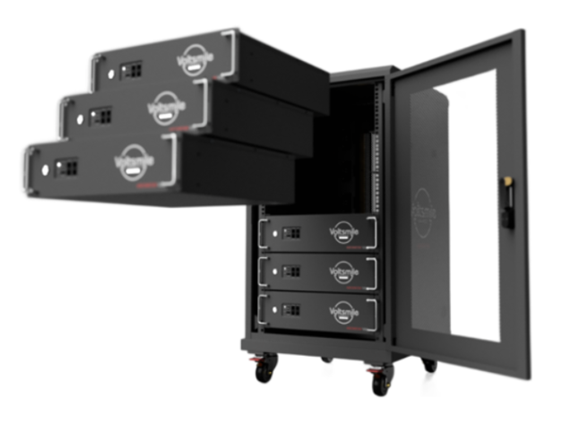Sometimes it is not so easy to realize what the design residential solar system should be. Especially if you have already installed something in the past.
Lets try to do it...
In this article we overview the main designs of residential solar systems:
There are no recommendations from my side; you can just see pros and cons.
Lets try to do it...
In this article we overview the main designs of residential solar systems:
- On grid
- Off grid
- Hybrid with DC coupling
- Hybrid with AC coupling
There are no recommendations from my side; you can just see pros and cons.
On-grid system
The simplest design by which a home solar power station can be built is a scheme with an on-grid inverter (string inverter).

The inverter converts DC current from solar panels into AC current and supplies it to the switchboard. In the switchboard, energy is distributed among the connected loads. If at some point in time the energy coming from the inverter exceeds the needs of the house, the surplus can be exported to the grid. If the energy from the solar panels is not enough to power the load, additional energy can be taken from the grid.
In this case, minimal upgrades to the switchboard are required. This scheme requires a bidirectional electricity meter to understand how much energy from the grid was spent on load consumption and how much energy was supplied to the grid.
This scheme proved itself well at the initial stage of solar energy development. Then nuances began to appear. The fact is that as the number of home solar power plants increased, a fairly large number of people wanted to sell energy to the grid. At certain times, for example, on a weekend, when the sun is shining brightly, all small producers supply energy to the grid, and its consumption drops to a minimum. In such a situation, exchange prices for electricity begin to fall rapidly, such are the economics law. And producers are forced to sell electricity to the grid at low prices. Sometimes prices take negative values, which means that producers pay extra for the supply of electricity to the grid.
The disadvantages of such a design also include its inability to operate during a blackout. The grid inverter is tightly tied to the grid and cannot convert the energy generated by solar panels independently. On the other hand, this feature of the grid inverter is also its advantage - its power depends only on the power of the installed solar panels and does not depend on the load of the house.
So, to summarize, we can highlight the main advantages and disadvantages of the grid scheme.
Pros:
Cons:
In this case, minimal upgrades to the switchboard are required. This scheme requires a bidirectional electricity meter to understand how much energy from the grid was spent on load consumption and how much energy was supplied to the grid.
This scheme proved itself well at the initial stage of solar energy development. Then nuances began to appear. The fact is that as the number of home solar power plants increased, a fairly large number of people wanted to sell energy to the grid. At certain times, for example, on a weekend, when the sun is shining brightly, all small producers supply energy to the grid, and its consumption drops to a minimum. In such a situation, exchange prices for electricity begin to fall rapidly, such are the economics law. And producers are forced to sell electricity to the grid at low prices. Sometimes prices take negative values, which means that producers pay extra for the supply of electricity to the grid.
The disadvantages of such a design also include its inability to operate during a blackout. The grid inverter is tightly tied to the grid and cannot convert the energy generated by solar panels independently. On the other hand, this feature of the grid inverter is also its advantage - its power depends only on the power of the installed solar panels and does not depend on the load of the house.
So, to summarize, we can highlight the main advantages and disadvantages of the grid scheme.
Pros:
- Simple
- Net metering
- Cheap
Cons:
- No power within outage
- Low sales benefits (even negative)
Off-grid system
Another design differs from the one described above in that it does not depend on the external network. It can work completely independently. This scheme has a battery that accumulates energy during the generation period and gives it for consumption. This scheme uses a charge controller, the battery is charged with direct current directly from solar panels. Then the energy is converted through the inverter into a form suitable for consumption by a normal load.

Such schemes are well suited for emergency power supply of small objects, for example, houses, yachts, campings.
In this case, it is impossible to use a on-grid inverter; an off-grid inverter is needed to convert energy.
In this case, the choice of battery system depends on preferences. Since lithium-ion batteries are considered the most efficient today, it is preferable to use this type.
The pros and cons of implementing such a scheme are presented below.
Pros:
Cons:
In this case, it is impossible to use a on-grid inverter; an off-grid inverter is needed to convert energy.
In this case, the choice of battery system depends on preferences. Since lithium-ion batteries are considered the most efficient today, it is preferable to use this type.
The pros and cons of implementing such a scheme are presented below.
Pros:
- Simple
- Good in an emergency
Cons:
- Not for all applications (small cabins mainly)
- Cannot use string inverter
Hybrid DC coupled
More complex schemes, called hybrid, include more equipment. They come in two types - with DC coupling and AC coupling. In the first case, a hybrid inverter is used. Its peculiarity is that it can work with both solar panels and batteries. Batteries can be charged from the inverter and also, if necessary, provide energy for conversion into AC to power the load. As a rule, the manufacturer puts a simple algorithm into the inverter's memory that can control the process of charging and discharging batteries. For more precise control, there is a special class of software (EMS - Energy Management System) that controls the operation of the energy storage system.

Since in this case a fairly large battery capacity is required, it is advisable to use batteries specially produced for these purposes. As a rule, these are lithium-ion battery assemblies, ready for use in residential premises with their own protection system, in a case, and with all the necessary accessories.

In this scheme, it often makes sense to divide the load into regular and critical. In the event of a power failure, only the critical load will be powered from the batteries. This is due to the inverter power. Often, the inverter power is selected based on the power of the solar power plant and the power of the installed battery. Thus, the inverter power can be less than the maximum power consumption of the entire house. Let's say a 32A three-phase input switch is installed at the facility. The maximum power consumption in this case is 22 kW. If solar panels with a total power of 15 kW are installed, then the inverter is also selected 15 kW. And in the event of a blackout, the entire load will go through the inverter and may exceed its nominal value. This can trigger the protective device, and the house may stay without electricity at all. To avoid this, the load is divided into two parts - regular and critical, and only the critical load, which does not exceed the nominal power of the inverter, is supplied with electricity in an emergency.
This design has a high level of reliability and allows optimizing energy consumption and output to the network at reasonable prices. The list of advantages and disadvantages of this scheme is given below.
Pros:
Cons:
This design has a high level of reliability and allows optimizing energy consumption and output to the network at reasonable prices. The list of advantages and disadvantages of this scheme is given below.
Pros:
- Use 100% solar energy
- Backup power within outage
- Energy consumption optimization
- Favorable net metering
Cons:
- Expensive
- For maximum effect needs a software
- Critical switchboard needed
Hybrid AC coupled
In this scheme, the critical and regular consumers should also be observed.

The scheme is universal - when there is sun, solar energy is used 100% to power the facility. If there is excess solar energy, it is not given to the grid but stored in batteries. In addition, the batteries can also be charged from the external grid during periods when the exchange price for electricity is minimal. During periods when the exchange price increases, the facility can also be powered from batteries, despite the fact that there is voltage on the grid. Energy can also be exported to the grid during periods of high prices. Such a complex algorithm of the system requires reliable control. It is not advisable to do this manually, as too many parameters need to be taken into account. To solve such problems, an energy management system (EMS) is used, as already mentioned above.

A hybrid inverter diagram, both in the case of DC coupling and in the case of AC coupling, turns into a so-called virtual power plant (VPP). Such a station not only provides a highly flexible and reliable power supply to an object (usually a modern private home), but can also be considered as a generating capacity. VPPs are already included in the calculation of power supply network parameters in some countries, and their role will grow significantly in the future. Speaking about the advantages and disadvantages of a hybrid circuit coupled with AC, the following can be noted.
Pros:
Cons:
Pros:
- Reuse installed string inverter
Cons:
- Losses in transitions AC/DC

